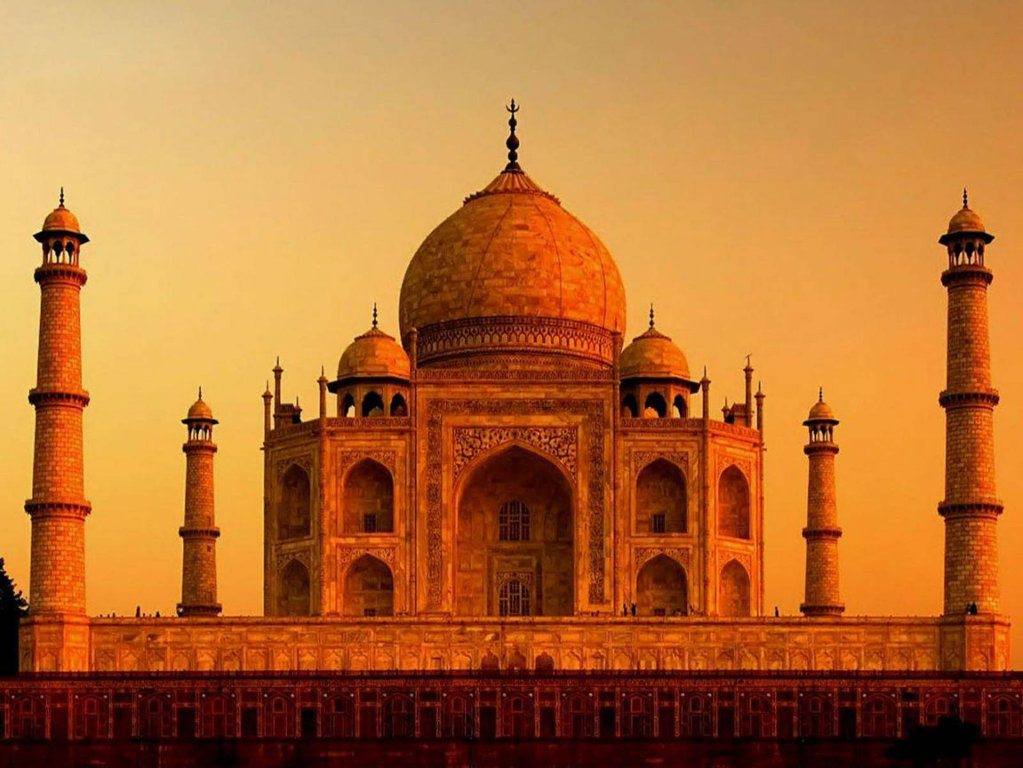
Taj Mahal
Eternal love in marble, Taj Mahal's beauty transcends time, a testament to devotion and artistry
| Location | Dharmapuri, Forest Colony, Tajganj, Agra, Uttar Pradesh 282001, India |
|---|---|
| City | Agra |
| Country | India |
| Coordinates | 27.1744°N 78.0422°E |
| Architect | Ustad Ahmad Lahori |
| Construction Started | 1632 |
| Completed | 1648 (Main mausoleum), 1653 (entire complex) |
| Builder | Emperor Shah Jahan (Mughal ruler) |
| Design | Mughal architecture with Persian influences |
| Historical Significance | A symbol of love, a UNESCO World Heritage Site, and one of the most famous landmarks in the world. |
The History of the Taj Mahal
The Taj Mahal is a breathtaking monument located in Agra, India, and is celebrated as one of the most magnificent architectural wonders in the world. It was commissioned by Emperor Shah Jahan in memory of his beloved wife Mumtaz Mahal, who died during childbirth in 1631.
The construction of the Taj Mahal began in 1632 and took approximately 16 years to complete. The main mausoleum was finished in 1648, while the entire complex, including the surrounding gardens and structures, was completed by 1653.
Designed by the renowned architect Ustad Ahmad Lahori, the Taj Mahal is a masterpiece of Mughal architecture with influences from Persian and Islamic styles. It is primarily constructed of white marble, beautifully inlaid with intricate designs and calligraphy, creating a sense of timeless elegance.
The Taj Mahal holds immense historical and cultural significance. It is considered a symbol of love and devotion and is often referred to as the "Jewel of Muslim Art in India." In 1983, it was designated as a UNESCO World Heritage Site, recognizing its unparalleled beauty and architectural excellence.
Today, the Taj Mahal is one of the most visited tourist attractions globally, drawing millions of visitors from all over the world who come to admire its stunning architecture and learn about its rich history.
In conclusion, the Taj Mahal is a testament to the enduring power of love and the heights that human craftsmanship can achieve. It stands as a living monument to a great love story and continues to inspire awe and wonder in all who visit.
Facts About the Taj Mahal
- The Taj Mahal is located in Agra, Uttar Pradesh, India.
- It was built by Emperor Shah Jahan in memory of his wife Mumtaz Mahal, who passed away in 1631.
- Construction began in 1632 and took around 16 years to complete the main mausoleum, with the entire complex being finished by 1653.
- The Taj Mahal was designed by architect Ustad Ahmad Lahori, and it represents a fusion of Mughal, Persian, and Islamic architectural styles.
- It is primarily made of white marble and features intricate inlay work, calligraphy, and decorative elements.
- The Taj Mahal is celebrated as a symbol of love and is considered one of the most iconic landmarks globally.
- In 1983, it was recognized as a UNESCO World Heritage Site due to its historical and architectural significance.
- The monument attracts millions of visitors from all around the world, making it one of the most visited tourist destinations.
- The Taj Mahal is not only a testament to love but also an architectural marvel and a tribute to the Mughal dynasty's legacy.